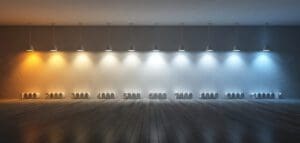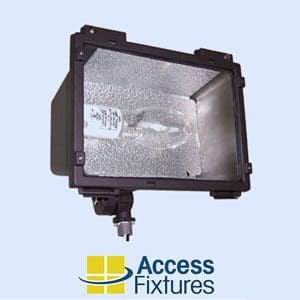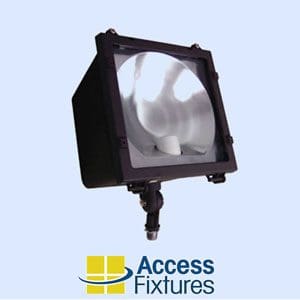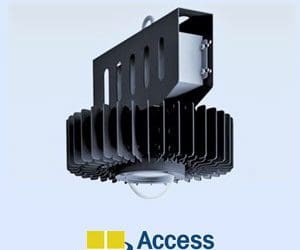To achieve a specific color of light from a light source, it is essential to understand the Kelvin temperature – also known as the color temperature of a light source.
A lamp’s color temperature signifies its warm, neutral, or cool color appearance.
This measurement is expressed in Kelvin. Watch the video on the right for a brief tutorial on Kelvin and a deeper understanding of color temperatures.
Kelvin Temperature from 1000K to 8000K
Light sources can vary based on the available color temperatures, spanning from 1000K to 8000K.
The Kelvin temperature determines the warmth or coolness of light.
With lower values indicating warmer tones and higher values result in cooler, bluer tones.
A Kelvin temperature exceeding 6500K produces a blue light reminiscent of an overcast sky, while temperatures of 3500K or lower impart a warmer glow akin to candlelight.
For a natural white light resembling daylight, opt for a color temperature ranging from 4100K to 5500K.
Kelvin Considerations
If you look at a building and notice some of the lights seem white while others seem to have a yellow hue. The lamps and/or LEDs have different color temperatures. This image shows a church that has lights on the front of the building emitting a warmer color light as compared to the bollards throughout the landscape that are using a white light. If you are adding new luminaires, or replacing lamps, be sure to match the color temperatures of the lamps or LEDs to ensure a consistent appearance throughout your property. Click the image on the right to view the front of the church with multiple Kelvin light sources.
Factors in Selecting the Correct Kelvin Temperature for Your Project
Understanding color temperatures and various Kelvins is only step one. The next step is to decide which Kelvin temperature is right for your application. There are many factors that go into this decision and they are outlined below.
- What light source will be used for the project?
- What color are the surrounding lights?
- What is the purpose of the light? i.e. safety, decorative, visibility, wildlife safe.
- Are there neighbors who might be bothered by a blue or white light?
- Where is the light being installed?
- Does the customer or property owner have a color preference?
Once all of these questions are answered, you will be able to choose the appropriate color temperature for your lighting project.
Most light sources have different Kelvins available to choose from. However, some light sources have “standard” color temperatures, such as High Pressure Sodium and Metal Halide. High Pressure Sodium generally has a warmer color whereas Metal Halide has a more natural white color. Other light sources, such as induction, LED and fluorescent have various Kelvin temperatures readily available, making it easy to customize your light to suit any application.

Kelvin Temperatures of 1000 Kelvin to 10000 Kelvin
Speak to an Access Fixtures Lighting Specialist about Choosing the Right Kelvin
Access Fixtures has the right lighting to suitably illuminate your property. Are you still unsure what Kelvin temperature will best suit your project? Let us know! Our lighting specialists will help you get the best output for your space. Talk with an Access Fixtures lighting specialist at 800-468-9925.





